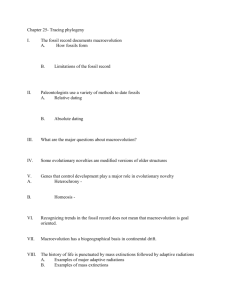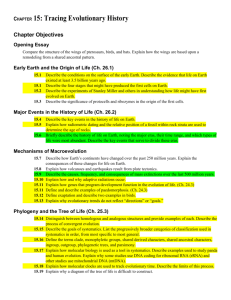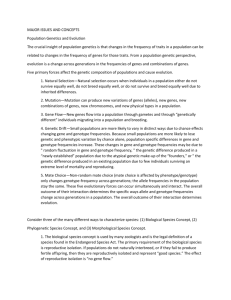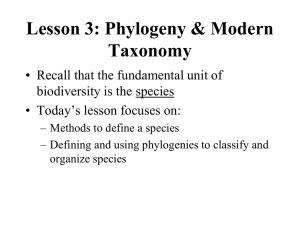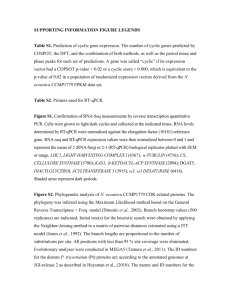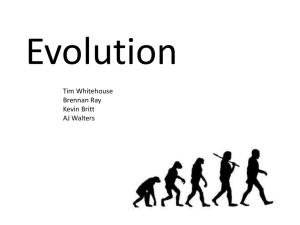To begin, phylogeny is the evolutionary history of a - mr-youssef-mci
advertisement
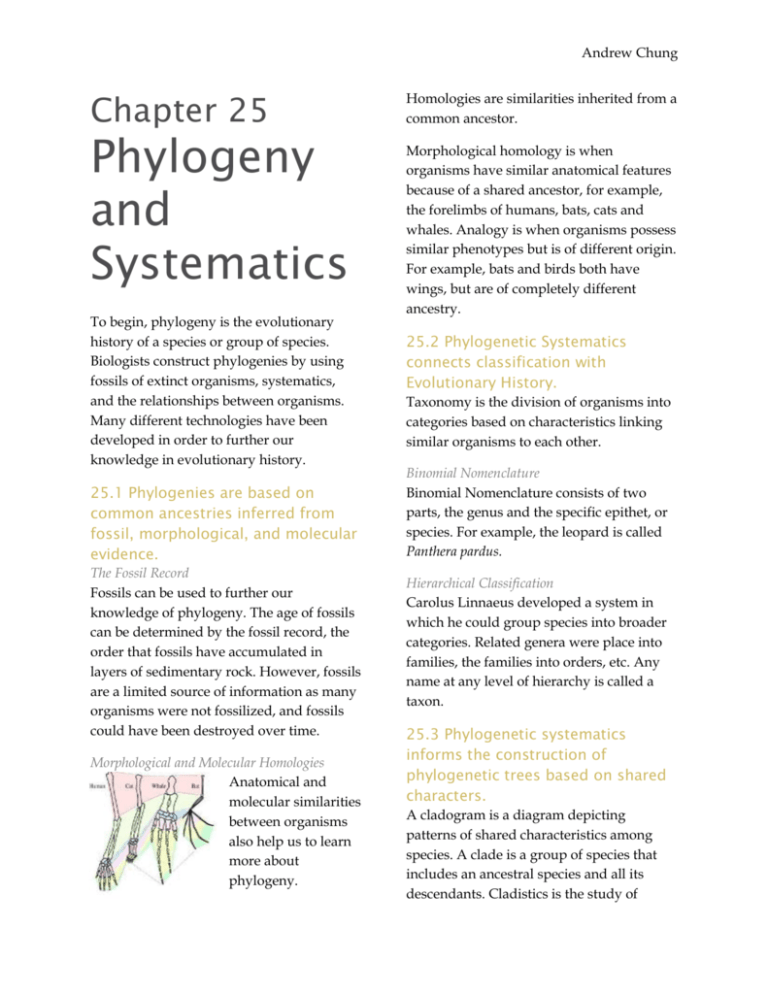
Andrew Chung Chapter 25 Phylogeny and Systematics To begin, phylogeny is the evolutionary history of a species or group of species. Biologists construct phylogenies by using fossils of extinct organisms, systematics, and the relationships between organisms. Many different technologies have been developed in order to further our knowledge in evolutionary history. 25.1 Phylogenies are based on common ancestries inferred from fossil, morphological, and molecular evidence. The Fossil Record Fossils can be used to further our knowledge of phylogeny. The age of fossils can be determined by the fossil record, the order that fossils have accumulated in layers of sedimentary rock. However, fossils are a limited source of information as many organisms were not fossilized, and fossils could have been destroyed over time. Morphological and Molecular Homologies Anatomical and molecular similarities between organisms also help us to learn more about phylogeny. Homologies are similarities inherited from a common ancestor. Morphological homology is when organisms have similar anatomical features because of a shared ancestor, for example, the forelimbs of humans, bats, cats and whales. Analogy is when organisms possess similar phenotypes but is of different origin. For example, bats and birds both have wings, but are of completely different ancestry. 25.2 Phylogenetic Systematics connects classification with Evolutionary History. Taxonomy is the division of organisms into categories based on characteristics linking similar organisms to each other. Binomial Nomenclature Binomial Nomenclature consists of two parts, the genus and the specific epithet, or species. For example, the leopard is called Panthera pardus. Hierarchical Classification Carolus Linnaeus developed a system in which he could group species into broader categories. Related genera were place into families, the families into orders, etc. Any name at any level of hierarchy is called a taxon. 25.3 Phylogenetic systematics informs the construction of phylogenetic trees based on shared characters. A cladogram is a diagram depicting patterns of shared characteristics among species. A clade is a group of species that includes an ancestral species and all its descendants. Cladistics is the study of Andrew Chung resemblances among clades. Shared Primitive Characters and Shared Derived Characters A shared primitive character is a character that is common outside the taxon or clade that is being defined. A shared derived character is an evolutionary feature that is unique to a particular clade. Outgroups Outgroups are species that are closely related to the ingroup, which is the group of species being studied. The outgroup must be less related to the ingroup than the species in the ingroup are to each other. Phylogenetic Trees and Timing In a phylogram, the length of a branch is related to the number of changes in a DNA seuquence in that lineage. the evolutionary changes occurred, according to the diagram. 25.4 Much of an organism’s evolutionary history is documented in its genome. Gene Duplications and Gene Families Gene duplication is important because it increases the number of genes in the genome, allowing for a higher frequency of evolutionary change. Orthologous genes are homologous genes that are passed in a straight line from one generation to the next but ended up in different gene pools due to speciation. Paralogous genes are a result of gene duplication, so they are found in more than one copy in one genome. Orthologous genes must wait after speciation to diverge, while paralogous genes can diverge while in the same gene pool since there is more than one copy. 25.5 Molecular clocks help track evolutionary time. Phylograms are relative. They present the sequence of events/mutations relative to one another. Ultrametric trees are useful because from looking at the diagram, you can see when Molecular Clocks A molecular clock is an evolutionary timing method based on the observation that regions of genomes evolve at constant rates. However, genes evolve at different rates, some a million times faster than others, and only some genes are clock-like. Neutral Theory The theory is that most evolutionary change has no effect on the probability of survival, and therefore is not influenced by Darwinian selection. The theory states that neutral mutations are responsible for the constant rate of evolution. If there is a low amount of neutral mutation, there is a slow rate of evolution. If there is a high amount of neutral mutation, a high rate of evolution.


